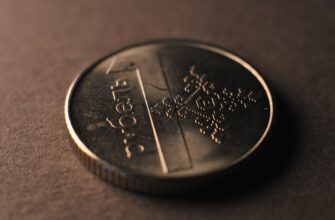- What is SWISX and Why Seek an ETF Equivalent?
- Top SWISX ETF Equivalent: SCHF
- Other Strong SWISX Alternatives
- Key Differences: ETFs vs Mutual Funds
- Choosing Your Ideal International Exposure
- SWISX ETF Equivalent FAQ
- Q: Is SCHF identical to SWISX?
- Q: Which has lower fees: SWISX or its ETF equivalents?
- Q: Can I convert SWISX to SCHF without tax implications?
- Q: Does SCHF include emerging markets?
- Q: Which ETF is best for dividend reinvestment?
- Q: How does currency risk affect these funds?
- Q: Are there commission fees for these ETFs?
- Final Thoughts
What is SWISX and Why Seek an ETF Equivalent?
SWISX (Schwab International Index Fund) is a popular mutual fund tracking the MSCI EAFE Index, offering exposure to large- and mid-cap stocks across developed markets outside North America. With a low 0.06% expense ratio and no investment minimum, it’s a cost-effective choice for international diversification. Yet many investors seek a SWISX ETF equivalent for advantages like intraday trading flexibility, potential tax efficiency, and brokerage platform compatibility. This guide explores your best ETF alternatives.
Top SWISX ETF Equivalent: SCHF
The most direct SWISX ETF counterpart is SCHF (Schwab International Equity ETF). Both share identical DNA:
- Identical Index: Tracks the MSCI EAFE Index (Europe, Australasia, Far East)
- Expense Ratio: 0.06% – same as SWISX
- Holdings Overlap: ~1,400 stocks including Nestlé, Toyota, and ASML
- Dividend Policy: Quarterly distributions, reinvested automatically
Key differences? SCHF trades like a stock throughout market hours, while SWISX prices once daily. SCHF also uses sampling (holding representative securities) versus SWISX’s full replication strategy, though tracking error remains minimal (<0.10%).
Other Strong SWISX Alternatives
While SCHF is the closest match, consider these alternatives for nuanced strategies:
- IEFA (iShares Core MSCI EAFE ETF):
- 0.07% expense ratio
- Larger AUM ($104B vs SCHF’s $36B)
- Includes small-cap stocks (broader diversification)
- VEA (Vanguard FTSE Developed Markets ETF):
- 0.05% expense ratio (slightly cheaper)
- Tracks FTSE index (includes Canada, excludes South Korea)
- Higher liquidity for active traders
- SPDW (SPDR Portfolio Developed World ex-US ETF):
- Ultra-low 0.03% expense ratio
- Follows S&P Developed Ex-US BMI Index
- Lighter weight on Japanese equities vs SWISX
Key Differences: ETFs vs Mutual Funds
Understanding structural variations helps optimize your choice:
- Trading Flexibility: ETFs (like SCHF) trade instantly during market hours; SWISX executes at NAV after market close
- Tax Efficiency: ETFs rarely distribute capital gains due to in-kind creation/redemption
- Minimums: SWISX requires $0 minimum; ETFs need at least one share (~$35 for SCHF)
- Automatic Investing: SWISX supports recurring investments; ETF automation varies by broker
Choosing Your Ideal International Exposure
Select based on your priorities:
- For Schwab users wanting parity: SCHF
- Lowest possible fees: SPDW (0.03%)
- Broader small-cap exposure: IEFA
- Canadian market inclusion: VEA
All options provide diversified exposure to economies like Japan (20-25%), UK (15%), and France (10%).
SWISX ETF Equivalent FAQ
Q: Is SCHF identical to SWISX?
A> Nearly identical in holdings and cost, but SCHF is an ETF (intraday trading) while SWISX is a mutual fund (end-of-day pricing).
Q: Which has lower fees: SWISX or its ETF equivalents?
A> SPDW (0.03%) and VEA (0.05%) are cheaper than SWISX (0.06%). SCHF matches SWISX at 0.06%.
Q: Can I convert SWISX to SCHF without tax implications?
A> Schwab doesn’t allow direct conversions. Selling SWISX triggers capital gains taxes; better to hold or transition gradually in tax-advantaged accounts.
Q: Does SCHF include emerging markets?
A> No. Like SWISX, SCHF covers only developed markets. Pair with SCHE or IEMG for emerging markets exposure.
Q: Which ETF is best for dividend reinvestment?
A> All major brokers offer automatic dividend reinvestment for SCHF, IEFA, VEA, and SPDW at no cost.
Q: How does currency risk affect these funds?
A> All are USD-denominated but hold foreign assets. Fluctuations in EUR, JPY, or GBP impact returns similarly across SWISX and equivalents.
Q: Are there commission fees for these ETFs?
A> SCHF trades free at Schwab, IEFA at Fidelity, VEA at Vanguard. Most $0-commission brokers support all.
Final Thoughts
For investors seeking a SWISX ETF equivalent, SCHF delivers near-identical exposure with ETF advantages. Alternatives like IEFA, VEA, and SPDW offer compelling variations in cost, index methodology, and market coverage. Evaluate your brokerage setup, tax situation, and desire for trading flexibility when choosing. All these low-cost options efficiently anchor the international sleeve of a diversified portfolio.








